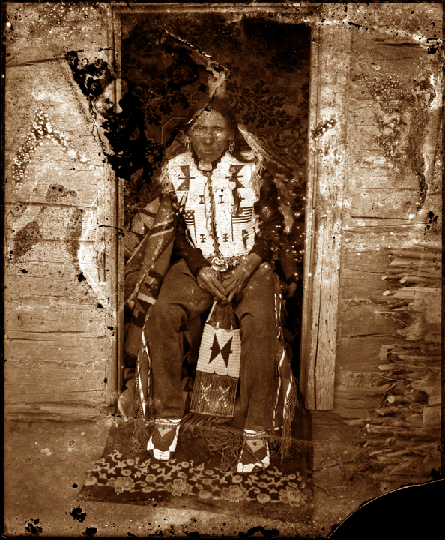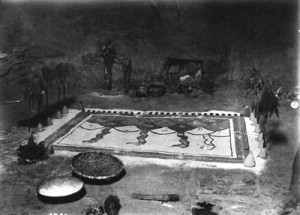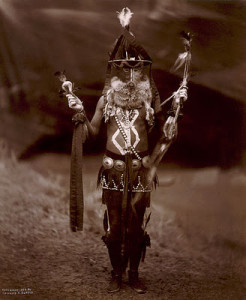
Native American Known as Shields Who Served as a Healer or Medicine Man, Crow Creek Reservation, courtesy Blue Cloud Abbey Native American Photograph Collection
Though some patients may have considered their stay at an asylum as a period of respite from the cares of the world, most patients just wanted out. Some understood that they needed help and could agree with the commitment decision, but even these patients wanted to get well and go home. Native American patients would have had these same feelings, but their stay in a facility like the Canton Asylum for Insane Indians probably helped them less than asylums helped Anglo patients. Unless their mental symptoms resulted from physical ailments–which would benefit from nutritious food, rest, and mild medications–asylum medicine was so different from Native American practices that it was not likely to help them.
Both native peoples and newcomers relied on herbs and nature-based tonics to help them get well, but except for certain very well-known ingredients, the herbal preparations of either group could be hit or miss when it came to curing ailments. However, Native Americans derived a great deal of benefit from their culture’s method of treatment as well as from any herbal concoction they might take in conjunction with it. Native peoples were community oriented, and relied heavily on ceremonies, chants, music, dancing, and so on that required many participants. This sort of community medicine varied greatly from the much more private doctor/patient practice of Europeans. When Native Americans went to a non-native hospital (or asylum), they had to step out of their culture and away from all the comfort, security, and faith that it held. Without their customary practices in place, particularly with mental issues, there would be little hope of gaining a cure.

